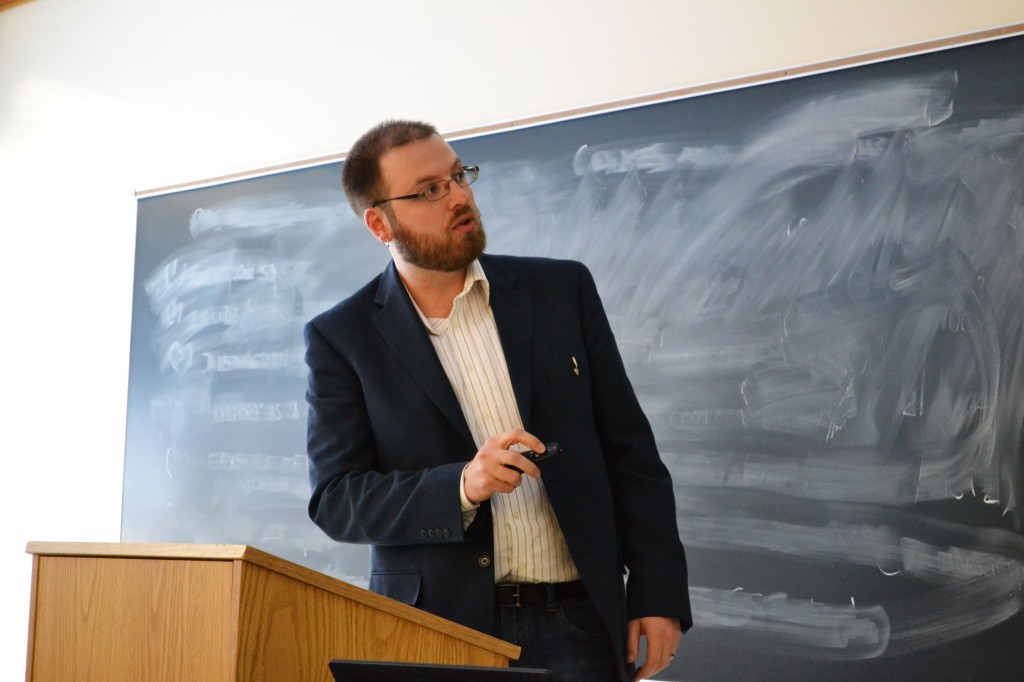
One visiting speaker is trying to help change how archaeology is studied and taught at Binghamton University.
Matthew Beaudoin, a project manager at Timmins Martelle Heritage Consultants in Canada, spoke on Friday afternoon in Science I about challenges in archaeology when preconceived notions of history affect the work of researchers. The lecture, “Bridging Gaps: Confronting Assumptions in Archaeological Interpretation,” was part of Beaudoin’s application for assistant professor in the public archaeology Master of Arts program, which relates archaeology to politics, education and social context.
Beaudoin discussed his archaeological research in the Ontario Great Lakes region and the Labrador subarctic region in Canada. According to him, interpretations of archaeological findings are often shaped by assumptions that the researchers already believe to be true, such as relationships between indigenous people and foreigners and between wealthy and poorer citizens.
He said archaeologists sometimes look for information that confirms their own beliefs, and he argued that more researchers should study each finding independently to get a more comprehensive view of how a society lived.
“Archaeological data and all data from the past are fragmentary records that are reconstructed in the present to create meaningful merit,” Beaudoin said.
As an example, Beaudoin described how archaeologists and historians interpreted a picture of members of the native Mohawk tribe dressed in European apparel instead of traditional tribal clothing. While they believed that the photo represented the influence of colonization, Beaudoin said that it was unfair to interpret that from a single photo.
“There’s a cycle where we approach these questions often by assuming from the start that the groups are different and search for data sets that would confirm this,” Beaudoin said. “The results then say they are different, but they’re actually not compared directly.”
Beaudoin said his future plans for research at the University include exploring towns that were previously tribal grounds and attempting to learn more about the tribes themselves, rather than just their relation to Western culture. He said that he would encourage students to reach out to members of tribal communities because many are willing to help but have never been contacted.
“The data is there, but people aren’t really drawing conclusions and making as many connections across sites as they could be,” Beaudoin said. “A number of sites that people see overshadow the ones that academic people tend to have explored.”
Graduate and doctoral students were invited to the lecture and could share their opinions about Beaudoin, who is one of four remaining candidates for the professorial position, with professors in attendance. The position entails helping students understand different ways to communicate archaeology to the public.
Kellam Throgmorton, a doctoral candidate studying anthropology, attended the lecture and said that he was enlightened by Beaudoin’s findings and that he liked his plans to build connections with old tribal communities.
“Delving into the local community is probably a very good idea given that you do need to establish these long-term connections,” Throgmorton said. “That’s how archaeology and communities interact best.”


